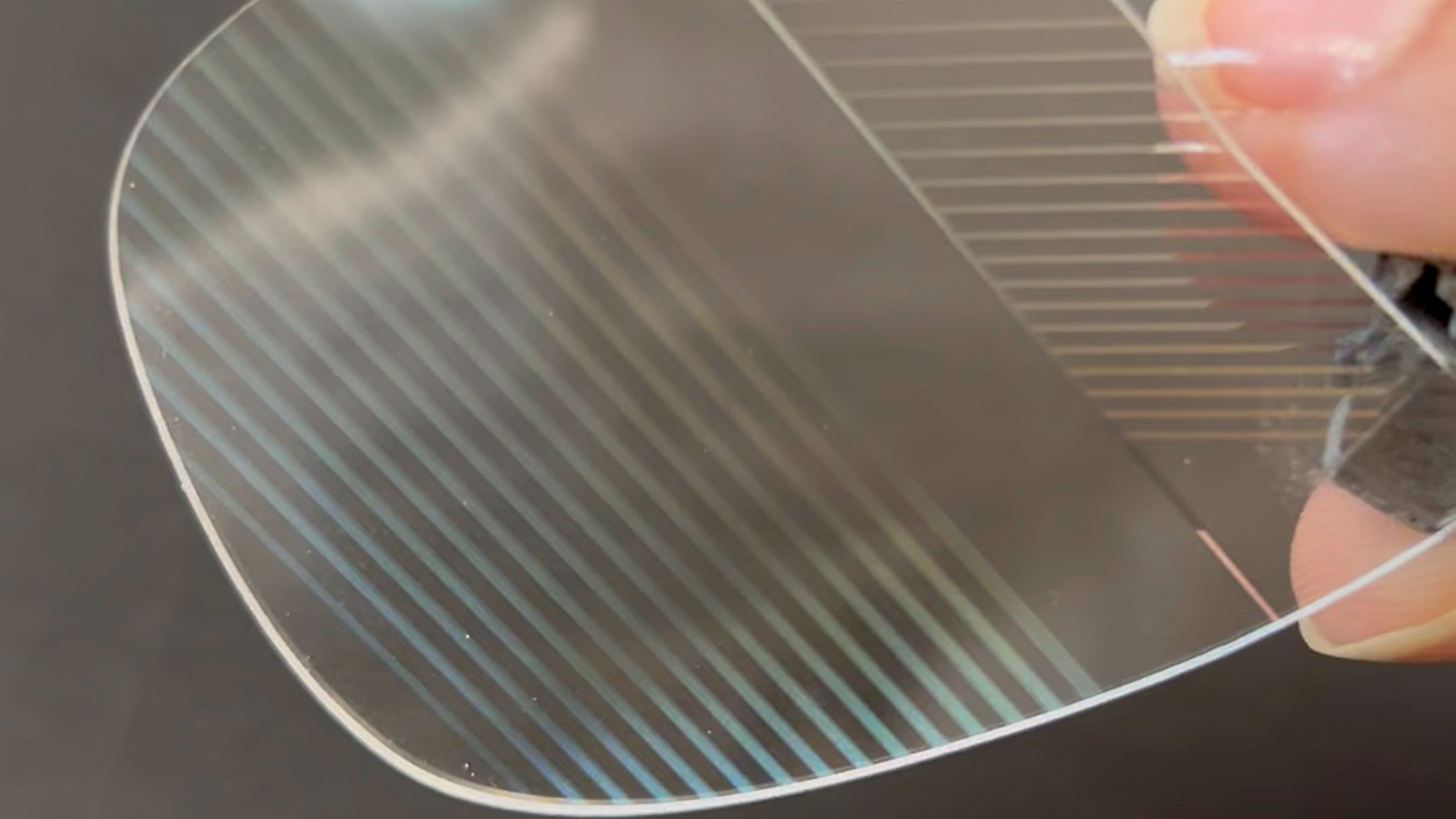
For most of us Augmented Reality (often abbreviated to AR) conjures up visions of Pokemon Go (what a summer that was, eh?) and Google Glass, in experiencing virtual 'layers' augmenting real life. But having just tried a new pair of AR glasses featuring Lumus’ 2D Wave Guide technology – you can forget all of that.
Lumus specialises in developing AR optics that don’t make you look like a 'Glasshole' (cough, sorry). In fact the Lumus Z Lens, which is what I tested out, make you look more like Buddy Holly. Featuring a tiny projector built into the arm and ultra-thin lenses, the unobtrusive nature of the tech changes the way you see the world, offering 50 degrees of vision.
Although I don't wear glasses, Lumus’ lenses can still be ultra-thin even if you need a prescription – they directly bond onto the Wave Guides, the only AR lenses that do so. While Lumus is a supplier and doesn’t sell to the public, expect to see the next generation of AR technology featuring the company's work – perhaps as soon as late 2024 or early 2025.
Crystal clear

While their discreet appearance is a big draw, what most impressed me about Lumus’ technology was the image quality. I was able to read small text with absolutely no difficulty and when shown images, one a photo of the Cookie Monster, I could see each individual strand of his fur, and there was no rainbow effect as often found on such glasses.
Honestly I have always thought of AR as a gimmick – and a colleague pondered whether we're ready for the tech, after seeing it in abundance at a major mobile phone trade show – but even after just a short time with them, Lumus’ lenses feel different.
One of the biggest issues of, say, Google Glass – RIP, the since-discontinued product was the ultimate precursor to AR's existence kicking off – was the difficulty using it outdoors. By comparison the Z Lens’ display can go from dull to exceptionally bright to suit outside – whatever the weather.

Similarly, the glasses I used were much lighter weight than the likes of Microsoft’s HoloLens (another victim of the consumer AR game, discontinued in 2021).
While Snap’s AR glasses, the aptly named Spectacles by Snap, only feature a 30-minute battery life, but I was assured by David Goldman, Lumus’ VP Marketing, that the Z Lens display would feature around 4-to-6 hours of battery life, depending on how the technology was implemented by its clients. If this is the case, and given the discreet design, I could see the lenses actually having practical value.
I was then shown a video of an animated airship and its interior and the video was smooth and detailed. Trying to have a conversation with such distractions was difficult; I felt like I was hallucinating. But this was further proof for me that the optical augmented reality of the Lumus Z Lens is the way to go.
If I’m ever going to get into VR/AR, it needs not to cramp my style, and Lumus seems to be at the forefront of that. It's not the only company in the game, though, with a T3 colleague recently testing out the Rokid Max. So the future of AR certainly looks to be strong and competitive – and I'm excited for it.







